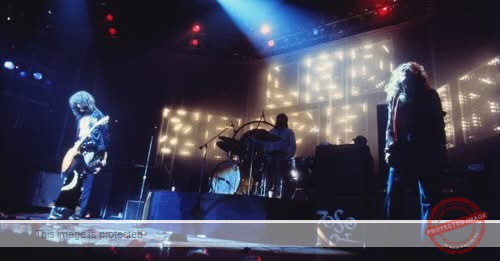
Here’s a look back at what happened in the Chicago area on April 10, according to the Tribune’s archives.
Is an important event missing from this date? Email us.
Weather records (from the National Weather Service, Chicago)
- High temperature: 90 degrees (1930)
- Low temperature: 18 degrees (1989)
- Precipitation: 2.53 inches (1922)
- Snowfall: 0.8 inches (1973)
1848: The Illinois & Michigan Canal opened. A riverboat laden with sugar and other goods from New Orleans became the first vessel to make its way along the 96-mile route from downstate LaSalle-Peru to Chicago.
It took nearly a dozen years and thousands of men, mostly Irish immigrants, to build the I&M Canal, making it possible to ship cargo from the Gulf of Mexico, up the Mississippi and Illinois Rivers, over to the Chicago River, out into the Great Lakes and over to the Eastern Seaboard.
Its usefulness as a means of water transportation, however, was virtually eliminated when a wider and deeper channel — the Sanitary and Ship Canal — was completed alongside the I&M Canal in 1900.
It took nearly a dozen years and thousands of men, mostly Irish immigrants, to build the I&M Canal, making it possible to ship cargo from the Gulf of Mexico, up the Mississippi and Illinois Rivers, over to the Chicago River, out into the Great Lakes and over to the Eastern Seaboard.
Its usefulness as a means of water transportation, however, was virtually eliminated when a wider and deeper channel — the Sanitary and Ship Canal — was completed alongside the I&M Canal in 1900.
1925: “The Great Gatsby” by F. Scott Fitzgerald was published.
Tribune reviewer Fanny Butcher said the book was “sharp, ironical, in its framework.”
Critic H.L. Mencken wasn’t impressed, calling Fitzgerald’s novel, “no more than a glorified anecdote, and not too probable at that. … This clown Fitzgerald rushes to his death in nine short chapters.”
1928: Octavius Granady, a 43-year-old Black attorney, ran for Republican committeeman against mob-backed white candidate Morris Eller in the “Bloody 20th” Ward on the West Side in 1928. On Election Day, two cars of gunmen chased Granady’s car, which crashed into a tree. Granady was then shot to death for the crime of participating in a democracy.
Nine men, including five police officers, were charged, but no one was convicted. Granady’s burial location in the southwest corner of Section 8 in Lincoln Cemetery has no grave marker.
1934: More than 18,000 fans jammed into Chicago Stadium to watch goalie Chuck Gardiner stop the Detroit Red Wings. Finally, at 30:05 of overtime, Harold “Mush” March scored to give the Chicago Blackhawks a victory and their first title.
Tribune columnist Charles Bartlett wrote: “March, a shrimp of a hockey player who matches his 140 pounds against all the heavyweights in the game, is going home with the most valuable puck in existence this morning. He seized the little black disc out of the Detroit cage last night at the Chicago Stadium after having blazed past Wilfred Cude, the Red Wing goalie, to give Chicago the world’s championship and the Stanley Cup for the first time in their eight-year career.”
1977: Led Zeppelin canceled one of its sold-out Chicago Stadium shows about an hour into its set. Jimmy Page, lead guitarist for the band, was stricken with stomach trouble and diarrhea as a result of food poisoning that caused the cancellation, the Tribune reported. But in light of Page’s glaring mistakes that night, many fans speculated the illness was owed to his drug abuse. Fistfights broke out between concertgoers and ushers after the cancellation was announced to the 19,000 fans.
The gig was later scheduled for an August 1977 make-up date, but was scrubbed after singer Robert Plant’s young son died of a stomach virus that July.
1992: U.S. Steel’s South Works manufacturing plant at 79th Street and the lakeshore closed. At its peak, the 585-acre site employed around 20,000 people. When the announcement came of its closing, it employed about 700.
“The Works turned out the structural steel that built Chicago and beyond,” the Tribune reported just before the plant’s closure. “South Works steel holds up McCormick Place, Sears Tower, the Amoco Building, the John Hancock Center, the Wrigley Building and Tribune Tower. It built the Cape Kennedy assembly structure and the Birmingham, Ala., Municipal Airport parking structure.”
Steelworkers Park occupies about 17 acres of the long-vacant site, but the rest is now planned for a national computer hub. The Chicago Plan Commission approved its creation in November 2024.
Want more vintage Chicago?
Subscribe to the free Vintage Chicago Tribune newsletter, join our Chicagoland history Facebook group, stay current with Today in Chicago History and follow us on Instagram for more from Chicago’s past.
